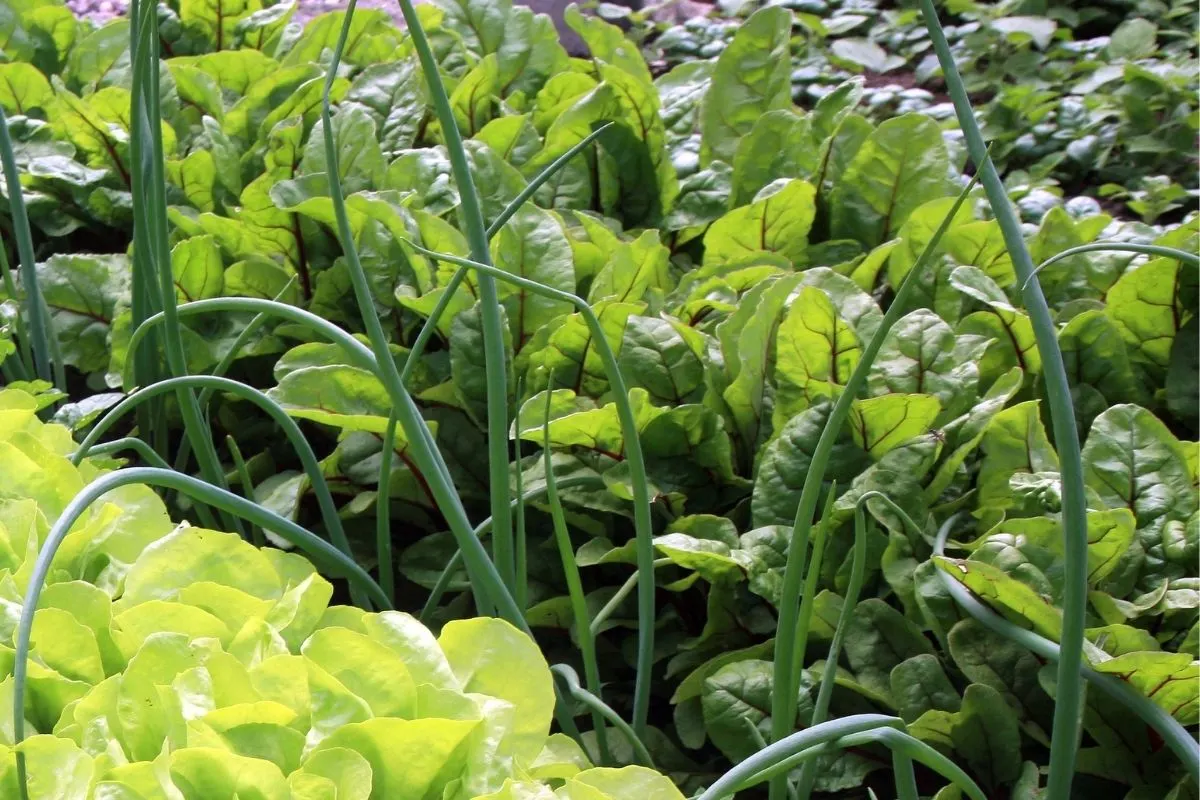Amazing Companion Plants For Brassicas
Amazing Companion Plants for Brassicas
Brassicas, also known as the cabbage family, are a diverse group of vegetables that include broccoli, cauliflower, cabbage, kale, Brussels sprouts, and collard greens. They are all cool-season crops that thrive in well-drained soil and full sun.
One of the best ways to grow healthy and productive brassicas is to plant them with companion plants. Companion planting is the practice of planting different types of plants together in order to create a mutually beneficial relationship. Some companion plants can help to repel pests, attract beneficial insects, or improve the soil quality.
Here are some of the best companion plants for brassicas:
- Alliums: Alliums, such as onions, garlic, and chives, are known for their insect-repelling properties. They can help to keep away cabbage moths, cabbage loopers, and other pests that can damage brassicas.
- Beans: Beans are nitrogen-fixing plants, which means they can help to improve the nitrogen content of the soil. This can benefit brassicas, which are heavy feeders.
- Carrots: Carrots and brassicas are both root vegetables, and they can benefit from being planted together. Carrots help to break up the soil, which can improve drainage for brassicas. Brassicas, on the other hand, can help to shade carrots from the sun, which can prevent them from bolting.
- Chamomile: Chamomile is a flowering herb that has insect-repelling properties. It can help to keep away cabbage moths, aphids, and other pests.
- Cucumbers: Cucumbers and brassicas can benefit from being planted together. Cucumbers help to attract beneficial insects, such as ladybugs and lacewings, which can help to control pests that damage brassicas. Brassicas, on the other hand, can help to shade cucumbers from the sun, which can prevent them from developing powdery mildew.
- Lettuce: Lettuce and brassicas are both cool-season crops that can be planted together. Lettuce can help to suppress weeds, and it can also provide a habitat for beneficial insects.
- Marigolds: Marigolds are another flowering herb that has insect-repelling properties. They can help to keep away aphids, whiteflies, and other pests.
- Nasturtiums: Nasturtiums are another flowering herb that has insect-repelling properties. They can help to keep away aphids, cabbage moths, and other pests.
- Potatoes: Potatoes and brassicas can benefit from being planted together. Potatoes help to draw pests away from brassicas, and brassicas can help to deter potato beetles.
- Spinach: Spinach and brassicas can benefit from being planted together. Spinach can help to suppress weeds, and it can also provide a habitat for beneficial insects.
- Squash: Squash can help to improve the soil quality by suppressing weeds and adding organic matter. It can also help to attract beneficial insects.
- Sweet corn: Sweet corn can help to attract beneficial insects, such as ladybugs and lacewings, which can help to control pests that damage brassicas.
When choosing companion plants for brassicas, it is important to consider the size and growth habit of the plants. For example, you would not want to plant a tall plant, such as a sunflower, next to a short plant, such as a cabbage. The tall plant would shade the short plant and prevent it from getting enough sunlight.
You should also consider the climate in your area. Some companion plants, such as beans and cucumbers, are not cold-hardy and should not be planted in cold climates.
By planting companion plants with your brassicas, you can help to create a healthy and productive garden. Companion planting is a natural and effective way to control pests and improve the soil quality.
Brassicas, such as cabbage, broccoli, and kale, are a popular choice for vegetable gardens. But did you know that certain companion plants can help to improve their growth and deter pests?
For example, alliums, such as onions and garlic, can help to repel cabbage moths and other pests that target brassicas. Other beneficial companion plants for brassicas include:
- Marigolds: Marigolds release a scent that repels cabbage moths and other pests.
- Nasturtiums: Nasturtiums attract beneficial insects, such as ladybugs, that prey on pests that target brassicas.
- Borage: Borage attracts pollinators, which help to improve the pollination of brassicas.
- Coriander: Coriander helps to improve the flavor of brassicas.
- Legumes: Legumes, such as beans and peas, fix nitrogen in the soil, which can benefit brassicas.
To learn more about companion planting for brassicas, visit Gardenia Inspiration. This website provides a comprehensive guide to companion planting, including information on which plants are good companions for brassicas and why.
FAQ of brassica companion plants
What are brassica companion plants?
Brassica companion plants are vegetables that grow well when planted near other brassicas. They can help to deter pests, attract beneficial insects, and improve soil health. Some common brassica companion plants include:
- Garlic: Garlic can help to repel aphids, cabbage moths, and other pests.
- Onions: Onions have a strong smell that can deter pests, such as carrot flies and cabbage worms.
- Marigolds: Marigolds are known for their insect-repelling properties. They can help to keep away aphids, whiteflies, and other pests.
- Nasturtiums: Nasturtiums are another good choice for insect-repelling companion plants. They can help to keep away cabbage worms, flea beetles, and other pests.
- Potatoes: Potatoes can help to improve the soil for brassicas. They are nitrogen-fixing plants, which means they add nitrogen to the soil. This can help brassicas to grow healthy and strong.
What are some of the benefits of companion planting with brassicas?
There are many benefits to companion planting with brassicas. Some of the most common benefits include:
- Pest control: Companion plants can help to deter pests from brassicas. For example, garlic, onions, and marigolds all have strong smells that can repel pests.
- Attracting beneficial insects: Companion plants can also attract beneficial insects, such as ladybugs and lacewings, which can help to control pests.
- Improving soil health: Some companion plants, such as potatoes, can help to improve the soil for brassicas. They are nitrogen-fixing plants, which means they add nitrogen to the soil. This can help brassicas to grow healthy and strong.
- Disease prevention: Some companion plants can help to prevent diseases in brassicas. For example, nasturtiums have been shown to help prevent clubroot disease.
- Increased yields: Companion planting can sometimes lead to increased yields of brassicas. This is because companion plants can help to improve the overall health and vigor of the plants.
What are some brassicas that should not be planted together?
There are a few brassicas that should not be planted together. These include:
- Broccoli and cauliflower: These two plants are susceptible to the same pests and diseases, so planting them together can increase the risk of infection.
- Cabbage and Brussels sprouts: These two plants are also susceptible to the same pests and diseases.
- Mustard and radishes: Mustard and radishes can compete for nutrients and water, so planting them together is not recommended.
- Peas and tomatoes: Peas and tomatoes can attract different pests, so planting them together can make it difficult to control pests.
- Spinach and beans: Spinach and beans can compete for nutrients and water, so planting them together is not recommended.
How do you take care of brassica companion plants?
Brassica companion plants generally require the same care as other brassicas. This includes regular watering, fertilizing, and weeding. It is also important to monitor the plants for pests and diseases. If you see any signs of problems, take action immediately to prevent the problem from spreading.
Image of brassica companion plants
- Marigolds: Marigolds are known for their insect-repelling properties, which can help to protect brassicas from pests such as cabbage moths and aphids.

- Nasturtiums: Nasturtiums are another insect-repelling plant that can be grown alongside brassicas. They also attract beneficial insects, such as ladybugs and lacewings, which can help to control pests.

- Cucumbers: Cucumbers and brassicas can be planted together because they have different root systems and do not compete for nutrients. Cucumbers also help to suppress weeds, which can benefit brassicas.

- Onions: Onions release sulfuric compounds that can help to deter pests from brassicas. They also help to improve the flavor of brassicas.

- Herbs: Many herbs, such as basil, rosemary, and thyme, can be grown alongside brassicas. These herbs can help to repel pests and attract beneficial insects.

Post a Comment for " Amazing Companion Plants For Brassicas"